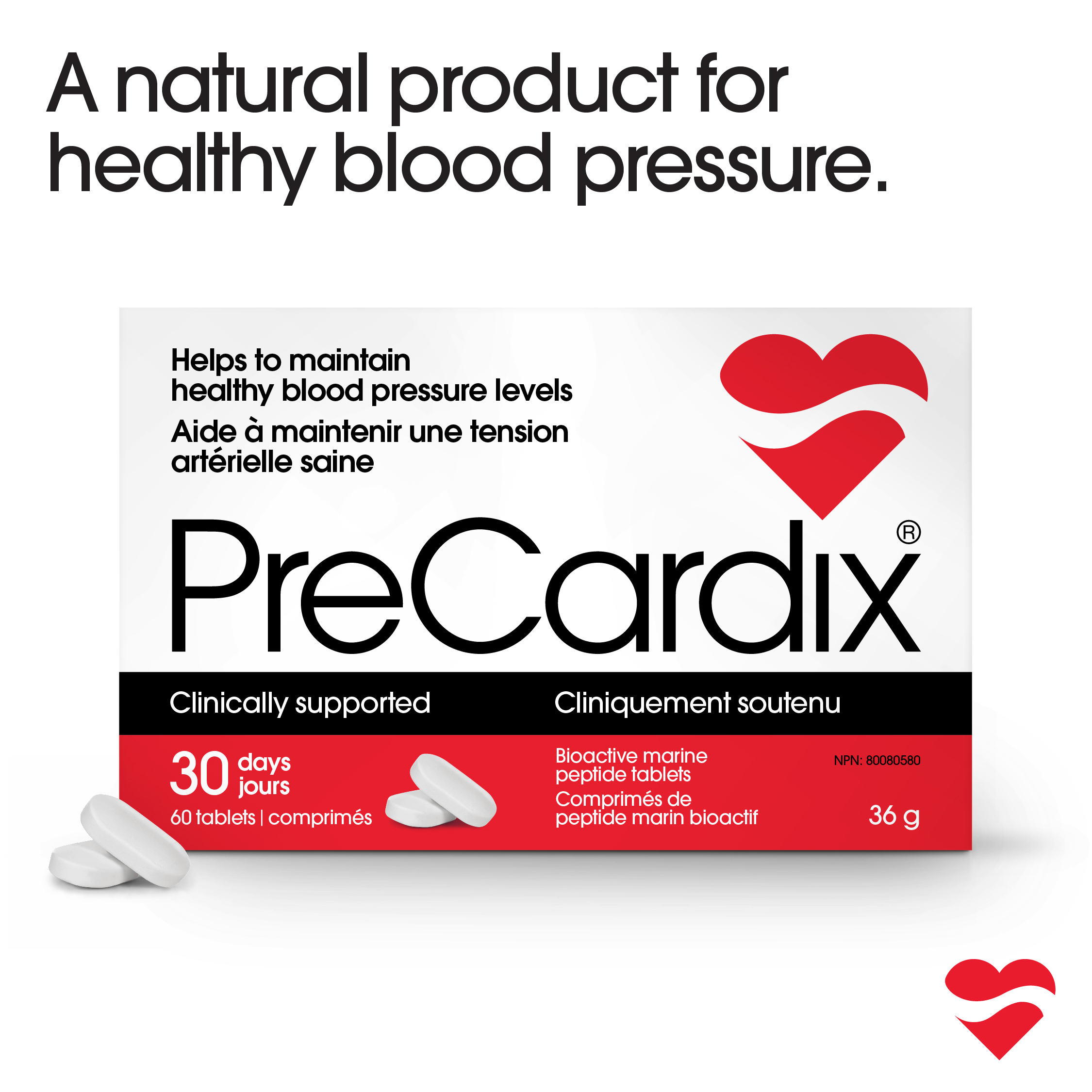The DASH Diet
How diet helps you manage your blood pressure.
By Dr. Liza Klassen ND | May 2024
DASH Diet | Hypertension | Sodium and Blood Pressure | Lifestyle and Blood Pressure

DASH stands for Dietary Approaches to Stop Hypertension. This diet results from two studies, DASH and DASH-Sodium that studied reducing blood pressure through dietary change. The DASH diet is a long-term approach to healthy eating to help prevent or treat high blood pressure.
Hypertension Canada recommends lifestyle change for both the prevention and management of hypertension. Examples of lifestyle changes that have been proven to effectively lower BP include achieving adequate exercise levels, stress reduction, smoking cessation and targeted dietary interventions, like the DASH diet. Making small but consistent changes in your lifestyle choices can lead to impactful decreases in your blood pressure, reducing your risk of cardiovascular events like a heart attack or stroke.
What is the DASH Diet?
The DASH Diet is a whole foods diet that emphasizes eating plenty of vegetables and fruit, low-fat dairy products, whole grains, lean meats, fish, legumes and nuts.
It also stresses the importance of limiting daily sodium to 1,500-2,300 mg each day (that’s ½ -1 tsp of salt/day).
The table below is adapted from Heart & Stroke, and provides a more detailed description of each food group, recommended servings and serving size examples for easy incorporation into your diet1.
| Food Group | Servings | Examples of 1 serving size |
| Vegetables |
4-5 servings/day |
250 mL (1 cup) raw leafy vegetables (spinach, lettuce, arugula, kale) 125 mL (½ cup) cooked vegetables (broccoli, cauliflower, asparagus, carrots) |
| Fruit | 4-5 servings/day |
1 medium piece of fruit (apple, pear, banana) 63 mL (¼ cup) dried fruit (raisins, cranberries, apricot) 125 mL (½ cup) fresh or frozen fruit (raspberries, blueberries, blackberries) |
| Whole Grains | 6-8 servings/day |
1 slice of whole-grain bread 250 mL (1 cup) ready to eat cereal 125 mL (½ cup) cooked rice, pasta, quinoa |
| Low-Fat Dairy Products | 2-3 servings/day |
250mL (1 cup) of milk 250mL (1 cup) of yogurt 50g (1.5 oz) of cheese |
| Lean Meat |
1-2 servings/day (<6oz/day) |
3 oz of lean cooked meat; chicken, turkey, fish |
| Beans, Legumes, Nuts | 4-5 servings/week |
1/3rd cup (1.5oz) of nuts (almonds, walnuts, cashews) 2 tbsp of nut butter (almond, peanut, cashew) 2 tbsp (0.5oz) of seeds (sunflower, pumpkin, chia, hemp, flax) ½ cup of beans (chickpeas, lentils, black beans, kidney beans) |
| Fats and Oils | 2-3 tsp/day |
1 tsp (5mL) of oil (olive, avocado, vegetable) 1 tsp (5mL) margarine |
Tips to Reduce Sodium Intake
The average North American adult consumes around 3,400mg of salt every day, with the most significant contributors being processed and fast foods. The foods prioritized in the DASH diet are naturally low in salt; therefore, simply following the DASH diet will reduce your sodium intake.
To further reduce your sodium intake, follow these simple tips:
- Use sodium-free spices instead of salt
- Don’t add salt to the water when cooking rice, pasta or hot cereal
- Rinse canned foods (like beans) to remove some of the sodium
- If purchasing prepared or processed foods, try choosing options labelled “no salt added,” “sodium-free,” “low sodium,” or “very low sodium
How effective is the DASH Diet?
In the original Dietary Approaches to Stop Hypertension clinical trial, participants followed the DASH diet for eight weeks without decreasing salt intake. Adults with hypertension experienced significant reductions in both systolic and diastolic blood pressure, -11.4 mmHg and -5.5 mmHg, respectively2.
In the DASH-Sodium trial, participants followed the DASH diet while also reducing their sodium intake to an intermediate amount defined as less than 2,400mg/day or a low amount, defined as less than 1,500mg/day. Reducing salt intake to a lower amount while on the DASH diet resulted in an additional 1.3 mmHg reduction in systolic blood pressure3. Reducing salt intake to a low amount provided an additional 3 mmHg reduction in systolic blood pressure, resulting in a total 14.4 mmHg reduction from baseline3.
When it comes to blood pressure, lifestyle and dietary change are powerful tools for both treatment and management. Reducing systolic blood pressure by 11 mmHg is significant! Each five mmHg reduction in blood pressure leads to a:
- 14% reduction in mortality due to stroke4
- 9% reduction in mortality due to Coronary Heart Disease4
- 7% reduction in all-cause mortality (death for any reason)4

Learn if PreCardix® is right for you.
For more expert advice on blood pressure health, and overall health and wellbeing, visit our growing library of articles at precardix.ca/blog.
Important Information
Always consult with your health care provider before making changes to your blood pressure management plan. PreCardix® does not treat, cure or prevent medical conditions. Measure and monitor blood pressure regularly. Know the signs of heart attack and stroke. Do not take PreCardix® if you are pregnant, breastfeeding, have renal artery stenosis, history of angioneurotic edema or shellfish allergy.
References
- DASH Diet. Heart and Stroke Foundation of Canada. https://www.heartandstroke.ca/healthy-living/healthy-eating/dash-diet. Accessed March 18, 2021.
- Appel LJ, Moore TJ, Obarzanek E, et al. A Clinical Trial of the Effects of Dietary Patterns on Blood Pressure. N Engl J Med. 1997;336(16):1117-1124. doi:10.1056/NEJM199704173361601
- Sacks FM, Svetkey LP, Vollmer WM, et al. Effects on Blood Pressure of Reduced Dietary Sodium and the Dietary Approaches to Stop Hypertension (DASH) Diet. N Engl J Med. 2001;344(1):3-10. doi:10.1056/NEJM200101043440101
- Bundy JD, Li C, Stuchlik P, et al. Systolic Blood Pressure Reduction and Risk of Cardiovascular Disease and Mortality: A Systematic Review and Network Meta-analysis. JAMA Cardiol. 2017;2(7):775-781. doi:10.1001/jamacardio.2017.1421


 Facebook Messenger
Facebook Messenger support@precardix.ca
support@precardix.ca Facebook
Facebook Instagram
Instagram YouTube
YouTube



